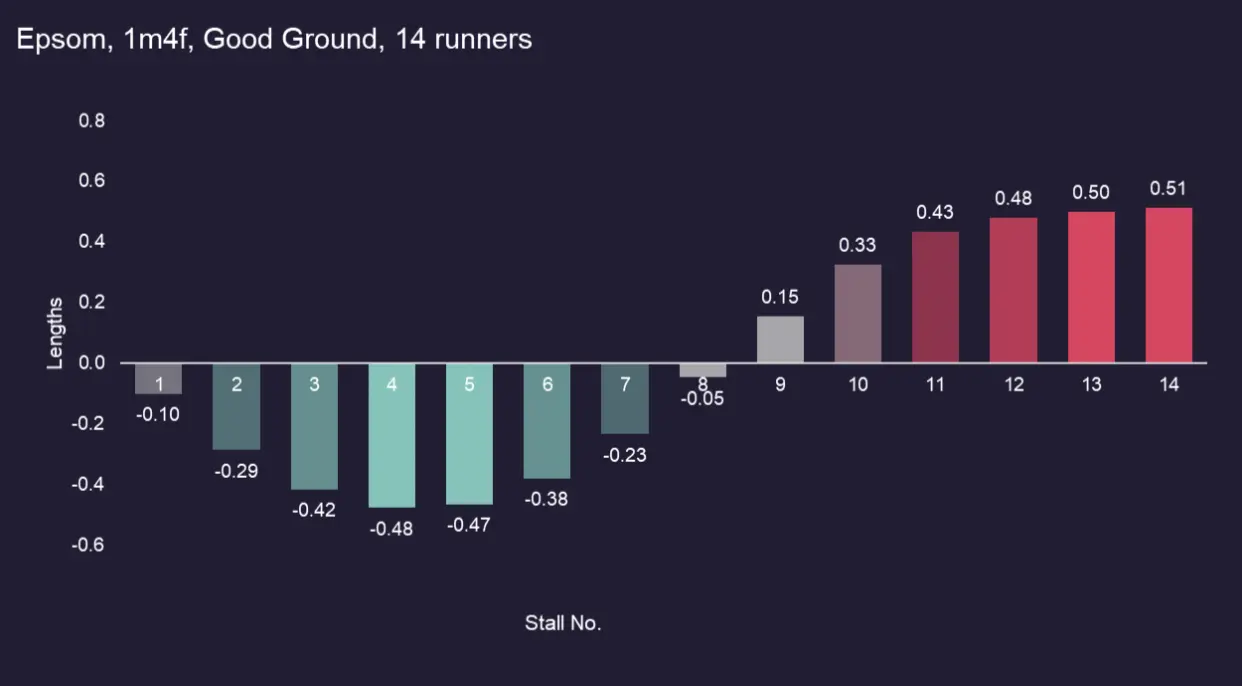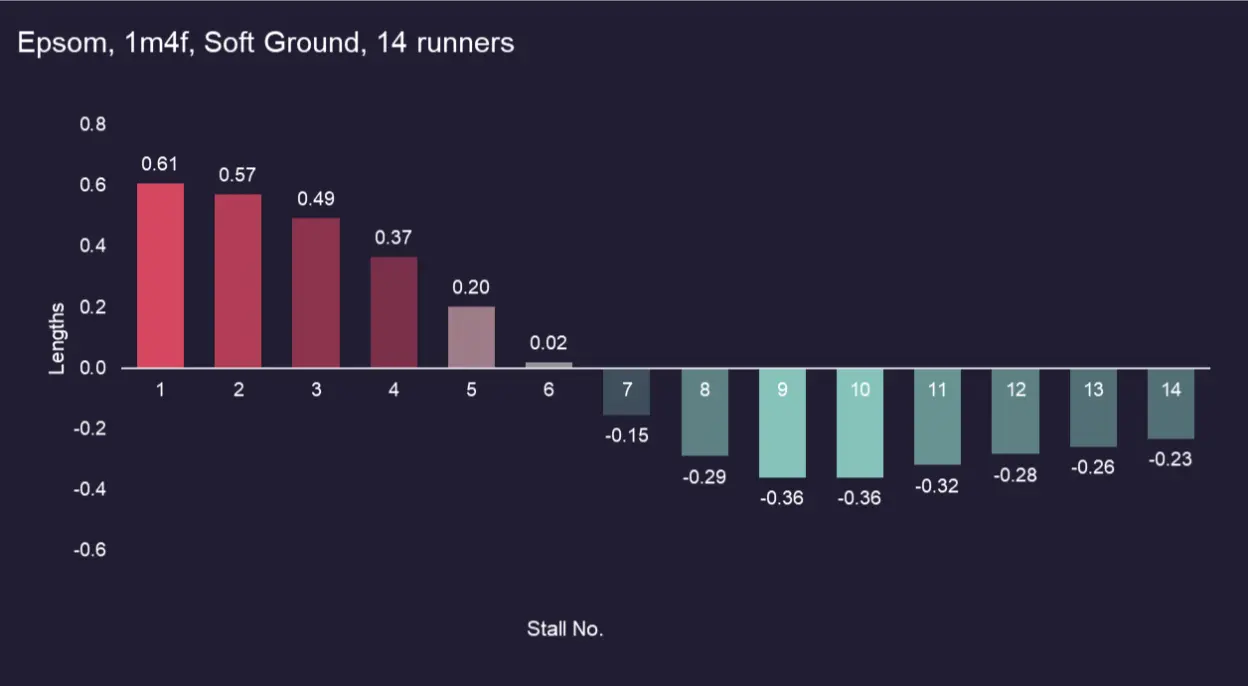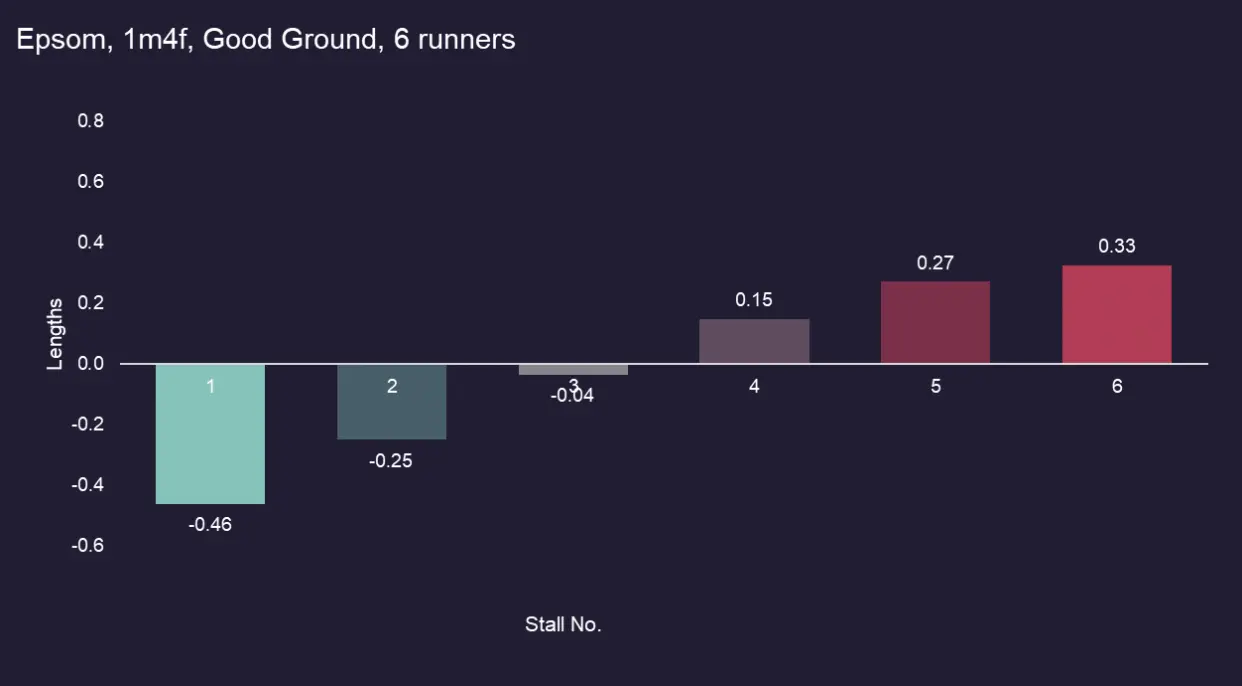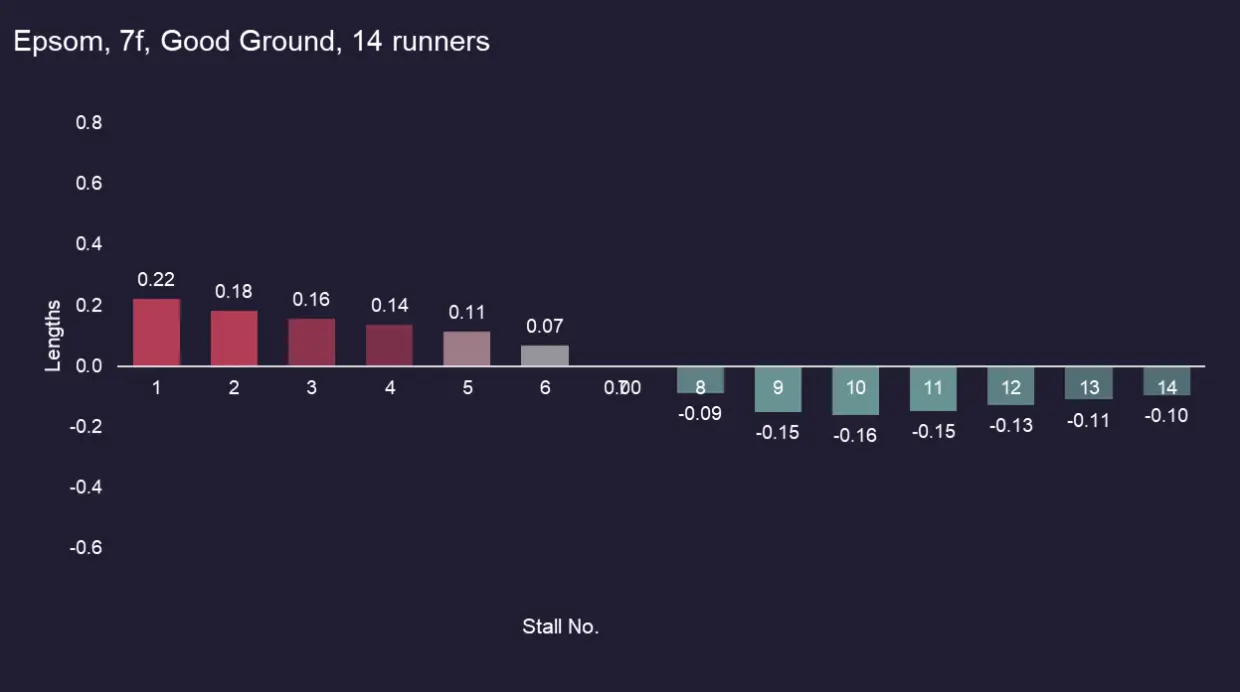Draw advantages: RaceiQ data scientists crunch the numbers
By Page Fuller
Last Updated: Wed 14 May 2025
Racing fans and punters have been crunching numbers and quantifying the effects of a draw on a horse’s chance in a race ever since stalls were introduced in Britain 60 years ago
It’s common knowledge that at a track like Chester there is a considerable advantage in being drawn low towards the inside. But what about a slightly more conventional track like Sandown?
How much of an actual effect on the outcome of a race does a draw have?
By studying more than 12 years' worth of race data, RaceiQ's data scientists have built a model that analyses the over or underperformance of runners from each stall in terms of how far runners from that stall were beaten historically.
This then quantifies in lengths the advantage, or disadvantage, a horse running in that stall will have, and it will be adjusted for the going, field size, distance and racecourse.
As an example, with the Betfred Derby fast approaching, let’s have a look at how the draw bias could change depending on some different factors
Epsom: 1m4f with 14 runners on Good ground

As you can see in the graph below, if the Derby were to be run on Good ground with 14 runners, there is a considerable advantage in being drawn high.
Epsom: 1m4f with 14 runners on Soft ground

However, if the skies happened to open in early June, and the ground changed to soft, it is a completely different story with the low draws becoming more favourable:
Epsom: 1m4f with 6 runners on Good ground

Taking us back to our Good ground example, but with only six runners instead, you can see that the high draw is favourable again, but the difference is not as large.
There is only a difference of 0.79 lengths between the best and worst stall, compared to the 0.99 length difference with 14 runners.
On some tracks, such as Beverley, the field size will make even more of an impact.
Epsom: 7f with 14 runners on Good ground

To further highlight how it can change across distances too, the 7f track on good ground with 14 runners favours those drawn low.
However, the advantage we see is far lower again, with only a difference of 0.38 lengths between the best and the worst draws.
As we progress through the season, we will uncover the tracks where draw is more or less relevant when assessing a horse’s chances of winning.
Realistically, a horse with a few pounds in hand should still be able to overcome a poor draw, and if the track is behaving abnormally, it will be less relevant for the meeting.
However, when we are looking for an edge on where a horse may be able to sneak an advantage on its rivals, this should prove invaluable.

Copyright 2025 Racing TV - All Rights Reserved.
Please bet responsibly
Copyright 2025. All rights reserved